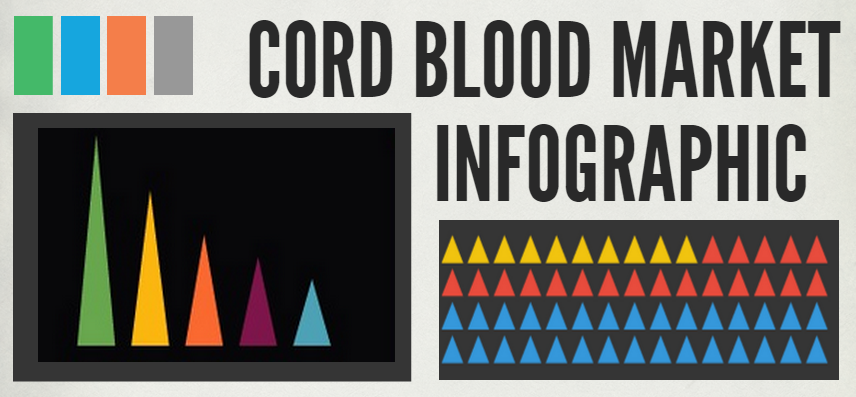Hematopoietic Stem Cell Transplant Rates, Utilization of Cord Blood, Awareness Rates, and More
The cord blood banking market has emerged gradually over the past 40 years, as 1974 was the first year in which it was proposed that stem and progenitor cells were present in human cord blood.[1] In the forthcoming years it was established that cord blood stem cells had similar properties as bone marrow and could be used as an alternative. Because it is a rich source of highly primitive hematopoietic stem cells, umbilical cord blood has enormous regenerative potential for stem cell based therapy, both for the treatment of hematological and non-hematological disorders.
Hematopoietic stem cell transplantation (HSCT) is the transplantation of multipotent hematopoietic stem cells, usually derived from bone marrow, peripheral blood, or umbilical cord blood. It is most often performed for patients with cancers of the blood or bone marrow, such as leukemia and multiple myeloma.
Umbilical cord blood is the second most common source of stem cells for cellular therapy now,[2] making the cord blood market of great interest to both investors and company management.
Hematopoietic Stem Cell Rates Drive Growth of the Cord Blood Market
Since 1974, the cord blood market has grown global in nature. Cord blood banks now exist in every developed country, as well as in most developing nations. With nearly 500 cord blood banks operating worldwide, maturation of the global cord blood market means that each cord blood bank is now fighting harder for market share.
The infographic below explores the current state of the cord blood banking market, with an emphasis on understanding important market metrics that have the potential to drive commercialization.
We created it for investors with whom we work, as you have the difficult task of assessing commercial opportunities with the cord blood market. However, this infographic will also interest the management of cord blood banks, as well as the management of companies who sell products in the cord blood banking marketplace (e.g. companies that sell equipment, reagents, and software to cord blood banks).
For those operating in the cord blood banking marketplace, it is vital to understand market data, including hematopoietic stem cell (HST) transplant rates, umbilical cord blood transplant rates, and awareness rates for cord blood banking among parents.
We welcome your feedback, so enjoy this infographic and let us know what you think!
NOTE: Click the “Cord Blood Banking Infographic” above to enlarge.
Footnotes
[1] Knudtzon S. (1974). In vitro growth of granulocyte colonies from circulating cells in human cord blood. Blood. pp. 43:357-361.
[2] Ilic, D., Miere, C. and Lazic, E. (2012). Umbilical cord blood stem cells: clinical trials in non-hematological disorders. British Medical Bulletin, 102(1), pp.43-57.
About Us
BioInformant is the first and only market research firm to specialize in the stem cell industry. Our research has been cited by the Wall Street Journal, Nature Biotechnology, Xconomy, and Vogue Magazine. Serving industry leaders that include GE Healthcare, Pfizer, and Goldman Sachs, BioInformant is your global leader in stem cell industry data.
To learn more, view the “Complete 2015-16 Global Cord Blood Banking Industry Report.”
